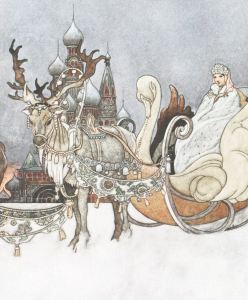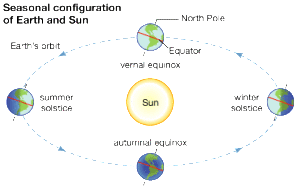 There is an astrological meaning behind the Christmas holiday that even many Astrologers are not aware of. It is actually a very important day and time of year for a wide array of civilizations and cultures on this planet, and the reason for this is completely astrological in nature. In this post the focus will be mainly on comparing the Christian holiday with the Vedic/Yogic perspective, but it should be noted that this time is incredibly important for almost every culture on this planet and has been for thousands of years.
There is an astrological meaning behind the Christmas holiday that even many Astrologers are not aware of. It is actually a very important day and time of year for a wide array of civilizations and cultures on this planet, and the reason for this is completely astrological in nature. In this post the focus will be mainly on comparing the Christian holiday with the Vedic/Yogic perspective, but it should be noted that this time is incredibly important for almost every culture on this planet and has been for thousands of years.
From the standpoint of Yogic and Vedic philosophy, Christmas day just so happens to be the first day in six months that can at least generally be considered each year to be an auspicious day. This is because it is the first day in six months that the Sun begins to noticeably move north, and the present day lasts longer than the day before. This is not popularly recognized, so don’t be surprised if you are a Hindu/Sanatan Dharma adherent reading this and you do not understand what I am talking about or how Christmas is relating to the Vedic traditions. Please bear with me, as there is a lot to explain to make this point clear. And remember, the aim of this post is only to add more spiritual significance to this day as a Christian holiday and also as a special day for all people on Earth, because of the astronomical activity that occurs on this day. There is no intention to take anything away from the Christian religion or any religion. I have the utmost respect for all religions and enlightenment traditions.
The Sun Moves North on the Winter Solstice
First we need to know why the Solstice matters in the first place. The reason the solstice and equinox times matter is because these are the places where the Sun noticeably changes its course, and where there is a change in the light of the world. This in turn creates the seasons, the natural cycles, the sense of time, and the balance and harmony that makes life on Earth so beautiful. At the Winter Solstice (Dec 21-25th) the Sun reaches its lowest point on the ecliptic (The path that it appears to make around the Earth each day), and stays at that lowest point for three more days. Then on the next day it finally begins to noticeably rise at a more northern place. This day (Dec 25th) is the first day since late June that the daylight, the light of this world, lingers longer than the day before. That is a very big deal, though it may not seem like it in this modern age, with the common person being so divorced from nature. But take away the smart phones and electricity and this knowledge becomes the difference between surviving winter or a painful death. Now we can see why this date has been so important to cultures and civilizations since time immemorial. This may be even more appropriate in very northern parts of the world such as Siberia and Russia, where Christmas may have originated. Here the Sun can hardly even be seen at this three day period where it is at its lowest point. Then on the 25th, it rises and continues to do so for six months until the Summer Solstice point, on June 22nd. At the midway point, we find the Spring Equinox, the place where there begins to be more daylight than night and thus, the beginning of Aries, as all of nature cyclically charges forth into being at that time. The Summer Solstice point is where the Sun appears to stall for a moment, and then begins backing down or moving south for six months, thus this space has the qualities of the sign of Cancer, the crab. Crabs appear to go forward and then stall, and start moving sideways back in the opposite direction, which is exactly what the Sun can be observed to do here. Cancer is also the most Yin sign, the sign of the divine feminine, and in many ways it is like the Sun is relaxing and being more Yin at this point, after six months of charging north. (Read more about that here). Then at the Fall equinox in late September marks the point where there begins to be more night than day, and thus the Sun “falls” in the sign of Libra. At this point the Sun is starting to move south quickly and the days are noticeably shorter. Then we get back to the Winter Solstice point and the cycle repeats. Notice that these four points mark the “cardinal” (or moveable) signs in both Western and Vedic Astrology. This is the rough logic behind that, but if you want to read more details on how this relates to the nature of the cardinal signs, read this older blog post.
How this relates to Christianity
So what better of a time of year to celebrate the birth of the “Son of God” then the exact astronomical time when the physical “Sun of God” has just been noticeably reborn? It’s even more interesting when we consider that in the Northern regions of the Earth the Sun can literally not be seen for three days, because it is so far south, hence a perfect symbol for death and resurrection. The northern areas of Russia and Siberia seem to have the oldest connections to the reindeer and other symbols associated with Christmas. It is well known and well documented that the Christian tradition wisely co-opted these symbols to strengthen their own relevance at the time. And it certainly seems to fit nicely….But we really don’t know when Christ was born, so he may have been born at that time or not; we really just don’t know. But it certainly does make sense to celebrate the birth of Jesus at this time though, due to the astrological synchronization explained above.
How this relates to Hinduism
In the Hindu/Yogic perspective, the time of the winter solstice, and the Sun’s change of direction to move north is incredibly important. This same time is called the Makara Sankranti, which can be translated to “The ingress into Capricorn”. Sankranti is Sanskrit for ingress, basically. Makara is sanskrit for crocodile, which is what Capricorn is the symbol of in Vedic Astrology, and most likely in the original western astrology as well, but that will have to be explained in another post. So this is an important time and it traditionally is celebrated as such by flying kites and other activities as it is said to be an auspicious date. It is currently celebrated about three weeks late by most in India due to calculation errors that put the Capricorn ingress around January 14th. The Solar ingress celebrations are meant to be calculated with the seasonal Tropical zodiac and this is something that Sri Yukteswar was very adamant about. To explain this fully would also take another post, but understand that this same celebration is actually supposed to coincide with Christmas, for the exact same reasons as Christmas does; because the Sun moves north.
This Northern change of the Solar energy is also called the Uttarayana, in Vedic philosophy. Uttara means “North” in Sanskrit, and Ayana means “movement”, or “time pass” in Sanskrit. The Uttarayana has been mentioned in ancient Vedic texts as being extremely important from the spiritual perspective, and this basis is astrological. Any auspicious deed or project we want to accomplish, we want to start it when the Sun is moving north. This way we start the project in rhythm with nature and all of the elements, as all of nature is growing with each new day as the Sun is moving north. In the same way, whatever projects we start at this time will “coincide” and therefore be more likely to grow stronger each day along with the Sun, the Soul of the Universe. We want to do things in harmony with the Universal Soul whenever possible.
So Christmas day marks the first generally great day to do auspicious deeds in six months! This is not to say that for six months of the year one should avoid doing good deeds, not at all. In the six months that the Sun moves south one can find many other shorter windows of time when the muhurta/electional astrology factors are all lining up in a fortunate way for the goal in mind…. But if the goal in mind is very important and it can wait, it should wait for this time, the Uttarayana. And then if possible, one should have an astrologer find the exact day and hour and minute that one should implement this action, if it is a truly important undertaking and one wants to make the best of it. This way whatever negative karma one has from birth that may prevent the full realization of the goal can be minimized and negated by choosing the most auspicious date to begin that would neutralize those negative factors. This is much of the basis behind Electional Astrology, or Muhurta as it is called in India.
Now it makes sense why we all give gifts on this day

Now we can see why it is so astronomically perfect to give gifts to each other on December 25th. It is the first auspicious day in six months, and what better way to make use of that than by giving gifts to all of your loved ones! Its also very interesting because this date was mentioned in the ancient Indian text, the Mahabarata, and one character refuses to die until the Sun starts moving north, because he knows how much more auspicious it is to die when the Sun starts moving north, then when it is moving south. There are spiritual reasons for this significance as well, and one will notice that generally more saintly and spiritually evolved beings tend to leave their bodies as the Sun moves north. Likewise more people tend to commit suicide as the Sun moves south and particularly around November and December, when the Sun is very low and weak in strength. The Sun is our self-esteem, and a weak Sun leads to depression more easily. It is likely that people who have difficult depression placements in their charts get more heavily impacted by this weak Sun transit than the average person, but most people will agree that November and December can be times when depression seems to set in more easily.
There is a lot more to this cycle and how it affects us psychologically, but this will have to wait for another post, as this one is long enough for now. In the next post we will go into how this relates to Yogic philosophy and the esoteric meaning of the Sun.

